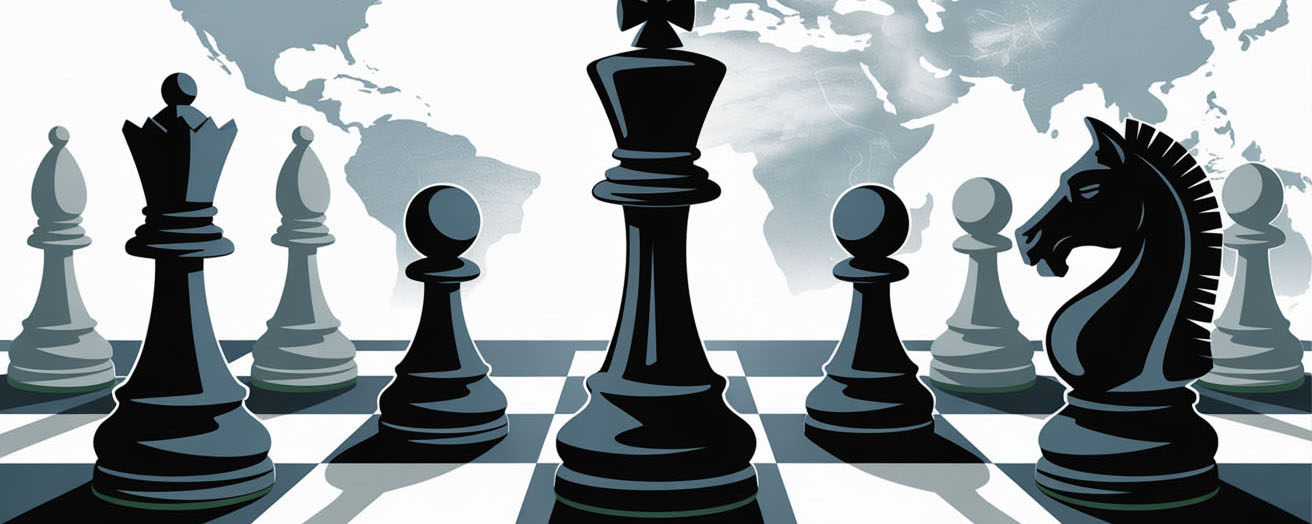INDIA@2047 : Fortress of Strategy


The third decade of the 21st century is being defined by a geopolitical upheaval where decades-old rules of global trade are fracturing, and economic priorities are increasingly subjugated to strategic imperatives. Punitive tariffs imposed by President Trump on imports from India and across the globe, the shifting energy supply chains post the Russia-Ukraine conflict, and the evolving, often unpredictable, dynamics between the US and Russia – all these events are brewing a global storm in which every nation is scrambling to keep its boat afloat. Amidst this churn, India is no mere spectator; it is charting its own course with a conscious and ambitious strategy.
This strategy marks a decisive departure from the traditional export-led growth model. It is a 'fortress' strategy – a policy designed to first render its internal foundations impregnable against external shocks, enabling it to engage with the world on its own terms from this position of strength. Prime Minister Narendra Modi’s slogan of 'Kam Daam, Dam Zyada' (low cost, high strength/value) is not merely an economic dictum but a symbol of this new national psyche: a vision of India that will not merely produce at low cost, but will carve out its global niche based on the 'strength' of quality, innovation, and self-reliance. This analysis delves into this multi-faceted 'fortress' strategy, which intertwines the philosophy of 'Atmanirbhar Bharat' (Self-Reliant India) with the goal of 'Viksit Bharat 2047' (Developed India 2047), seeking to understand if this approach can establish India as a leading power in this uncertain era.
External Pressures and India's Strategic Pivot
To grasp the essence of India’s strategic pivot, it is crucial to understand the external pressures shaping it. Trump’s so-called 'Liberation Day' tariffs were not just a symbol of protectionism but a stark example of the weaponization of trade, where economic policies are wielded to achieve geopolitical objectives. India, with its significant trade surplus with the US, found itself directly in the crosshairs of this policy. This situation compelled India to rethink its export dependence and to view the domestic market as the primary engine of growth. Similarly, the Russia-Ukraine conflict reshaped global energy politics. Importing energy at discounted rates from Russia became an economic necessity for India, especially as traditional suppliers diverted their focus towards Europe. However, this decision placed India in a complex diplomatic quandary. Amidst pressure from the US and the EU, India asserted its 'strategic autonomy,' arguing that its energy imports were essential, while the West's trade with Russia continued in non-essential goods. The burgeoning Russia-India trade, reaching up to $65 billion, underscored India's compulsion for energy security but also brought it within the periphery of Western sanctions. These external shocks forged a consensus in New Delhi: India cannot entirely entrust its economic destiny to global forces; it must build its intrinsic strengths.
Building the 'Fortress' and Pillars of Self-Reliance
India's response is not merely defensive but a well-considered, proactive, and multi-dimensional constructive effort. The foundation of this 'fortress' rests on India's vast and growing domestic market. With over half its population projected to be under 30 by 2025, and private consumption contributing 61.4% to its GDP, India possesses a unique strategic cushion that can absorb the shocks of global recessions and trade wars. The projection of 75 million middle-income and 25 million affluent households by 2030 will create a consumer base that will not only fuel domestic growth but also provide Indian companies with the necessary scale to compete globally.
The most crucial instrument in building this 'fortress' is the Production Linked Incentive (PLI) scheme. This differs from traditional subsidy models as it doesn't just encourage investment but directly rewards production and sales. Having already attracted investments worth 1.76 trillion rupees, this scheme incentivizes companies not just to manufacture in India, but to sell from India to the world. It is the practical manifestation of the 'Make in India' and 'Make for the World' philosophies. This strategy aims to integrate India into global supply chains, not as a mere importer, but as a value-added manufacturer.
This strategy is not limited to a few industrial sectors but is a national campaign for self-reliance and capacity building across every facet of life. The use of indigenous weaponry in initiatives like 'Operation Sindoor' and a policy of 'intolerance' towards terrorism demonstrate India's accelerated reduction of external dependency for its security. In the energy sector, a thirty-fold increase in solar capacity, 10 new nuclear reactors, and deep-water oil/gas exploration underscore India's ambition to transform from an energy importer to a self-reliant energy power. In technology, the National Critical Minerals Mission and the establishment of six new domestic semiconductor units are steps to ensure India is not vulnerable if future battles are fought over chips and minerals. Gaganyaan and over 300 space startups symbolize India's technological leap. This 'fortress' is not merely of concrete and machines, but of people too. Extending social security to 250 million people through Direct Benefit Transfer (DBT), promoting women's entrepreneurship through 'Lakhpati Didi' (Millionaire Sister) initiatives, and generating employment under the 'Viksit Bharat Rojgar Yojana' (Developed India Employment Scheme) ensure that growth is inclusive and strengthens the nation's human capital.
Challenges and the Way Forward
This ambitious strategy is not without its challenges. Within the walls of this 'fortress,' several vulnerabilities still need to be addressed. Inadequate infrastructure, complex regulatory processes, and a shortage of skilled labor still pose significant hurdles to large-scale industrialization. Digital successes like UPI and the JAM Trinity demonstrate India's innovation potential, but replicating this success in the complex manufacturing sector will hinge on the sustained and efficient implementation of policies. Crucially, self-reliance must not be synonymous with isolationism. India must strike a delicate balance between protectionism and global competitiveness. The 'Vocal for Local' slogan cannot afford to overlook global quality standards and the necessity of foreign investment.
The Grand Strategic Gamble of 2047
India's current economic and foreign policy is not a short-term reaction; it is a grand strategic gamble to achieve the goal of 'Viksit Bharat 2047'. It is preparation for a world that will be less integrated, more competitive, and far more unpredictable. The essence of the 'fortress' strategy is that in an unstable world, your most reliable ally is your own internal strength. This strategy endeavors to position India such that it can withstand global storms, maintain its strategic autonomy, and ultimately reach a point where it does not merely accept global rules but also plays a significant role in shaping them. The success of this 'fortress' will hinge on how swiftly India addresses its internal weaknesses and sustains the pace of innovation. If successful, it will present a new development model not just for India, but for a multipolar world order – a model that balances national interests with global engagement.